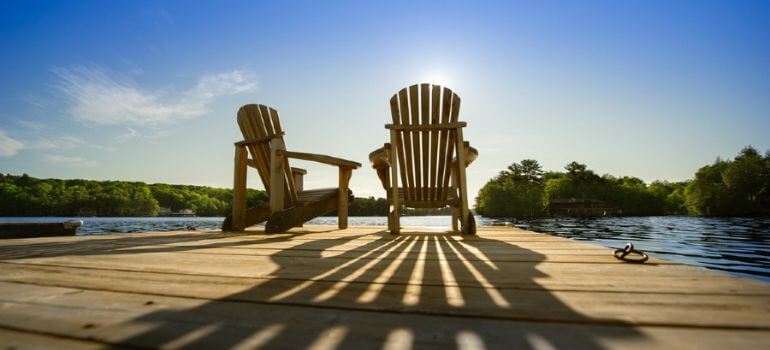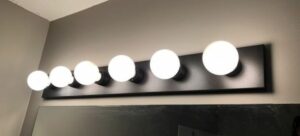When it comes to crafting the perfect Adirondack chair, one of the most critical decisions you’ll make is choosing the right type of wood. The type of wood you select not only affects the chair’s aesthetic appeal but also its durability and overall performance. In this comprehensive guide, we’ll walk you through the best types of wood for Adirondack chairs, ensuring you make an informed choice for your outdoor seating comfort.
Introduction
Adirondack chairs are an iconic symbol of relaxation and comfort, making them a popular choice for outdoor seating. Their distinctive design, featuring a slanted backrest, wide armrests, and a low-to-the-ground profile, offers the perfect spot to unwind and enjoy the great outdoors. However, to ensure your Adirondack chair stands the test of time and remains an attractive addition to your outdoor space, you must choose the right type of wood.
Cedar: The Timeless Classic
Cedar is a beloved choice for crafting Adirondack chairs due to its natural beauty and impressive durability. Its resistance to decay and insects makes it a top contender for outdoor furniture.
Pros of using cedar for Adirondack chairs:
- Natural resistance: Cedar contains natural oils that repel insects and prevent decay, increasing the chair’s lifespan.
- Aesthetic appeal: Cedar’s reddish-brown color and fine grain lend a rustic charm to your outdoor space.
- Lightweight: Cedar is relatively lightweight, making it easy to move your chairs around.
Cons to consider with cedar:
- Price: Cedar is moderately priced but may cost more than some other wood options.
- Maintenance: While cedar resists decay, it still requires regular maintenance to retain its color and durability.
Pine: Affordable and Versatile
Pine is a budget-friendly wood option that is readily available, making it a popular choice for Adirondack chairs.
Pros of using pine for Adirondack chairs:
- Affordability: Pine is one of the most cost-effective wood options.
- Easy to work with: Pine’s softness makes it easy to shape and customize.
- Accepts finishes well: Pine readily accepts paints and stains for a personalized touch.
Cons to consider with pine:
- Durability: Pine is softer than some other woods, which can lead to faster wear and tear.
- Susceptible to insects: Without proper treatment, pine can be vulnerable to insects and decay.
Redwood: Nature’s Beauty
Redwood is often touted as one of the most beautiful woods, known for its rich color and natural resistance to decay.
Pros of using redwood for Adirondack chairs:
- Exceptional durability: Redwood’s natural oils make it highly resistant to decay and insects.
- Attractive appearance: The deep reddish-brown hue of redwood creates a stunning visual impact.
- Low maintenance: Redwood requires minimal maintenance to retain its beauty.
Cons to consider with redwood:
- Cost: Redwood is on the higher end of the price spectrum.
- Limited availability: Redwood can be harder to find in some regions.
Teak: Unmatched Elegance
Teak is renowned for its unparalleled elegance and superb weather resistance, making it a top choice for Adirondack chairs.
Pros of using teak for Adirondack chairs:
- Outstanding durability: Teak can withstand harsh weather conditions, including rain and sun.
- Exquisite appearance: Teak’s natural golden-brown color and fine grain offer timeless beauty.
- Low maintenance: Teak requires minimal upkeep to maintain its appearance.
Cons to consider with teak:
- Price: Teak is one of the most expensive wood options for Adirondack chairs.
- Weight: Teak is heavy, making it less portable than lighter woods.
Cypress: The Southern Gem
Cypress is a wood choice that emanates Southern charm and offers impressive resistance to decay and insects.
Pros of using cypress for Adirondack chairs:
- Natural rot resistance: Cypress contains cypressesene, a natural preservative that deters decay.
- Unique appearance: Cypress boasts a pale yellow to light brown color, adding a distinctive touch to your outdoor space.
- Longevity: Well-maintained cypress chairs can last for decades.
Cons to consider with cypress:
- Price: Cypress can be moderately priced, similar to cedar.
- Availability: Cypress might not be as readily available as some other wood options.
Mahogany: Rich and Durable
Mahogany is known for its richness, durability, and ability to age gracefully, making it a choice for those seeking timeless Adirondack chairs.
Pros of using mahogany for Adirondack chairs:
- Elegance: Mahogany’s deep, reddish-brown color and fine grain exude sophistication.
- Durability: Mahogany is resistant to decay and insects.
- Ages beautifully: Mahogany’s color deepens over time, enhancing its beauty.
Cons to consider with mahogany:
- Price: Mahogany is on the higher end of the price scale.
- Weight: Mahogany can be heavy and less portable than some other woods.
Oak: The Traditional Choice
Oak is a traditional wood choice known for its strength, durability, and timeless appeal.
Pros of using oak for Adirondack chairs:
- Strength: Oak is exceptionally strong and can withstand heavy use.
- Attractive grain pattern: Oak’s prominent grain patterns add character to your chairs.
- Readily available: Oak is widely available and comes in various types.
Cons to consider with oak:
- Weight: Oak is heavy, making it less suitable for portable chairs.
- Price: Depending on the oak type, it can vary in price.
Maple: Hard and Dependable
Maple is a sturdy and dependable wood option, known for its hardness and durability.
Pros of using maple for Adirondack chairs:
- Strength: Maple is among the hardest of woods, ensuring longevity.
- Accepts finishes well: Maple readily accepts stains and paints for customization.
- Moderate price range: Maple falls within a reasonable price range.
Cons to consider with maple:
- Lack of distinct appearance: Maple’s grain pattern is subtle compared to other woods.
- Vulnerability to insects: Without proper treatment, maple can be susceptible to insects.
Choosing the Right Finish
Regardless of the wood type you choose, applying the right finish is essential to protect your Adirondack chair from the elements and enhance its appearance. Common finishes include paint, stain, and clear sealants.
Paint: Adds color and personality to your chair, but may require more maintenance.
Stain: Preserves the natural beauty of the wood while offering protection.
Clear sealants: Provide protection without altering the wood’s appearance.
Maintenance Tips
To ensure your Adirondack chair remains in top-notch condition, follow these maintenance tips:
- Regularly clean your chair to remove dirt and debris.
- Apply the appropriate finish or sealant as needed.
- Store your chair in a dry, covered area during the winter months.
- Inspect and tighten screws and bolts periodically.
Customization and Design
Personalizing your Adirondack chair allows you to express your unique style. Consider the following customization options:
- Paint your chair in your favorite colors.
- Add cushions or pillows for extra comfort.
- Experiment with different backrest designs.
Sustainability Matters
If you’re environmentally conscious, opt for wood from sustainable sources. Look for certification from organizations like the Forest Stewardship Council (FSC) to ensure responsible forestry practices.
Conclusion
In conclusion, the best type of wood for your Adirondack chair depends on your preferences, budget, and the level of maintenance you’re willing to undertake. Each wood type offers its own unique charm and benefits. Whether you prioritize natural beauty, durability, or affordability, there’s a wood option that suits your needs.
Now, it’s time to make your choice and enjoy the comfort and style of your Adirondack chair for years to come.

Frequently Asked Questions (FAQs)
FAQ 1: Can I paint my wooden Adirondack chair?
Yes, you can paint your wooden Adirondack chair to match your outdoor decor or personal style. Just ensure you use a suitable outdoor paint and follow proper preparation and application techniques.
FAQ 2: What is the average lifespan of an Adirondack chair?
The lifespan of an Adirondack chair can vary depending on the wood type, maintenance, and exposure to the elements. With proper care, a well-made chair can last 10-20 years or more.
FAQ 3: Do I need to cover my Adirondack chair during the winter?
Covering your Adirondack chair during the winter can help protect it from snow, ice, and moisture. It’s a good practice to prolong the chair’s lifespan.
FAQ 4: Can I leave my wooden Adirondack chair outdoors year-round?
While some woods are more weather-resistant than others, it’s generally advisable to store your wooden Adirondack chair indoors or cover it during harsh weather conditions to prevent damage.
FAQ 5: Are there any eco-friendly sealants for Adirondack chairs?
Yes, there are eco-friendly sealants available that are water-based and low in volatile organic compounds (VOCs). These sealants provide protection while being environmentally responsible.



